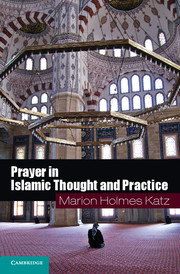5 - Women and prayer
Published online by Cambridge University Press: 05 April 2013
Summary
The fundamental obligation to pray, and the components of prayer, are neutral with respect to gender. As Ibn Qudāma (d. 620/1223) puts it, “The basic principle is for the same rules of prayer to apply to women as to men, because the [divine] address includes them.” That is, the scriptural commandments mandating and describing prayer apply to believers of both sexes. However, because menstruation precludes valid ṣalāt, ritual purity law affects women of reproductive age differently from men. Furthermore, classical Islamic law stipulated a number of distinctions between the ideal prayer practices of the two sexes. These distinctions were extremely minor in the case of individual prayer and far-reaching in the case of congregational prayer. As we shall see, a number of the gender-based distinctions in the performance of public and communal prayer have been subject to some debate in the contemporary world, although they remain authoritative for many believers.
Menstruation cancels the state of ritual purity required for valid ṣalāt, so a woman cannot perform her canonical prayers until her flow ceases and she performs full ablutions (ghusl). The same applies to any person in a state of major pollution (janāba), for instance if one has had sexual intercourse. However, unlike the other bodily functions entailing janāba, a menstrual period is of relatively long duration and cannot be omitted at will. Unlike days of Ramaḍān fasting, which must be made up at another time, prayers omitted due to menstruation need not be performed later; a menstruating woman simply is not obligated to perform the prayers for the duration of her period, so she does not “owe” them later. The fact that women of reproductive age are cyclically excluded from prayer could be taken to imply their religious imperfection. In one widely cited but controversial ḥadīth recorded in the Ṣaḥīḥ of al-Bukhārī, the Prophet is cited as stating that women are “deficient in intellect and religion” (nāqiṣāt ʿaql wa-dīn).
- Type
- Chapter
- Information
- Prayer in Islamic Thought and Practice , pp. 177 - 214Publisher: Cambridge University PressPrint publication year: 2013



